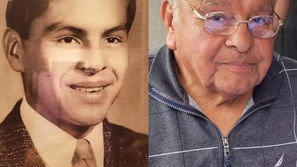Could Lile be another Duane Furman?
- Bill Coate
- Jan 11, 2020
- 4 min read

Madera County Historical Society
Duane Furman, MUSD superintendent for 24 years.
Madera Unified School District trustees recently extended Superintendent Todd Lile’s contract and gave him a little more money. Unless something happens, he will be at the helm of the school district at least until 2023. I say, “unless something happens,” because the mortality rate among school superintendents in California is somewhere around three years.
The job tenure of local school chiefs has turned into a game of musical chairs, which prompts this writer to ponder Lile’s future. Is there any chance he can defy the odds and survive? Perhaps a little history is in order. Let’s take a look at Duane Furman. How in the world did he keep his job for 24 years?
Remember that the Furman era began in a turbulent time — May 1965. Voters within the boundaries of the Madera Union High School District had decided to abolish 10 individual school districts and create just one from the remnants. The plan melted the Alpha, Berenda, Dixieland, Eastin-Arcola, La Vina, Howard, Madera Elementary, Ripperdan, and Webster districts into one unified district, which would also include the High School. With a 20 percent total voter turnout, the margin in favor of unification was 870 to 697.
While all four Madera precincts and the rural districts of Dixieland and Howard favored the proposal, other rural precincts rejected the plan. In the case of Webster, with its 50 percent turnout, not one vote was cast in favor of unification.
Once the Madera Unified School District had been created and a board elected, the number one task facing trustees was the selection of a superintendent. That’s why they summoned Furman. Upon arriving at the office of Norman Gould, Madera County Superintendent of Schools, the school board offered Furman the superintendent’s job and he accepted. Having settled that landmark piece of business, the first MUSD board completed its organizational meeting, and Duane Furman went home.
As the impact of what had happened hit him, Furman grew reflective. For more than two hours he sat alone in the dark of his living room, contemplating the enormous mountain he was about to climb. Then came the time for action. The problems, which beset every newly unified school district were all facing Furman. There would be a large minority of the school constituency who would remain opposed to unification, preferring instead local autonomy over neighborhood schools. Loyalty ran deep in the rural areas. In most cases, those country schools, which were now part of Madera Unified, represented a community — a community with a rich history and a propensity toward independence.
Somehow the new leader of the new district would have to convince these people that their identification with the past through their schools would not be lost. Somehow Furman would have to show them the new district would remain sensitive to their individual needs, even if their schools had to be closed. The job would not be easy.
There was also the matter of attempting to bring together the employees of what had been 10 different school districts into a unified, cohesive team. Not the least of the obstacles in this connection was compensation. No district had the same salary schedule, a condition that obviously could not be allowed to continue. A unified salary schedule had to be worked out with the employees.
Then there was the curriculum. How would 10 different educational packages be coordinated into one with which everyone could live? Further, an administrative staff had to be formed. Who would become the assistant superintendent? What would be done with the other nine superintendents who formerly ran their own school districts? These and a hundred other situations threatened to assail Furman. So what made it possible for him to survive for two and a half decades?
Chief among the reasons was his school board. Its members were experienced enough and smart enough to know that seven people could not run a school district. Someone had to be on the point of the spear. Someone would have to be responsible for making it work, and everybody recognized that person had to be the superintendent.
Trustees knew it was a difficult job and one fraught with danger. California was full of ex-superintendents who had fallen from their perches within a year or two of their appointments as the first administrator of a newly unified school district.
The people of Madera had elected seven individuals who knew exactly what their job entailed and what it didn’t.
Then came the second reason for Furman’s success — his own sense of realpolitik — his ability to mold the many diverse opinions of the school community into a mutually acceptable course of action.
Now, as we begin a new year, what is the outlook for Lile’s tenure as superintendent? This writer thinks it looks good, if he wants it. The school trustees seem to understand what their collective job is. No board member is attempting to do Lile’s job for him, and Lile seems to recognize that the people have elected representatives to give him directions. He won’t be scolding them in public.
So, it could be that Lile will be around for a while, unless, of course, he gets a wild hair and runs off to Dubai or some other exotic place to demonstrate his educational genius.


























Comments